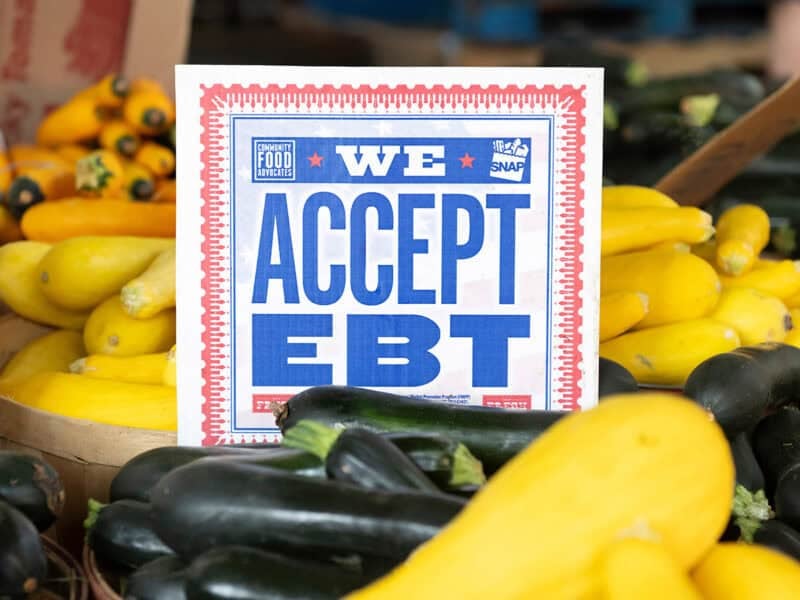

Hey, friends. Big changes are coming to SNAP (Supplemental Nutrition Assistance Program, previously known as “food stamps”) as part of the new federal budget plan, sometimes called the “One Big Beautiful Bill.” We’ve been getting a lot of questions about changes to SNAP since the bill passed, and we’ve been working to wrap our heads around it all, too.
If you use SNAP, or know someone who does, these updates could make a real difference in how much help you receive and what it takes to stay eligible. It’s all overwhelming, so let’s break it down in plain English.

Under the new budget plan, all able-bodied adults between the ages of 18 and 64 without dependents will need to work, volunteer, or participate in job training for at least 20 hours per week to keep their SNAP benefits.
Under previous SNAP rules, parents caring for dependent children under 18 were generally exempt from federal work requirements. The new budget bill, now signed into law, lowers that exemption: only parents with children under 14 now qualify. If your child is 14 or older, you’ll be required to meet SNAP’s work or activity requirements to continue receiving benefits, unless your state has a waiver in place.
Under the new budget plan, “able-bodied” is a broad label used to decide who must meet SNAP’s expanded work requirements. While people with verified disabilities or medical conditions can qualify for exemptions, the process can be long and difficult. Those without a formal diagnosis, who can’t easily see a doctor, or who face delays in paperwork may lose benefits even if they can’t work. Temporary injuries or illnesses may also go unrecognized, and because states have some discretion in how they apply the rules, the outcome can vary depending on where you live.
If you don’t meet the hourly requirement, you may only receive 3 months of SNAP within a 3-year period.
Right now, the federal government splits the cost of administering SNAP with states 50/50. The new budget plan lowers the federal share to 25%, meaning states will have to pick up the remaining 75%.
States that make errors in SNAP payments could be on the hook for 5% to 25% of those benefit costs—which could lead to stricter rules, delayed applications, or fewer staff to help recipients.
Federal SNAP changes don’t directly raise state taxes, but it will likely shift the costs onto state and local budgets. Historically, that kind of cost shift results in tax hikes, cuts to other important services, or both.
Normally, SNAP benefits adjust each year to keep up with inflation. This budget plan caps those increases, so benefits may not keep pace with rising food prices in the future. So, you know that buzz word, “tariff”? Yeah…things could get rough.
To put it bluntly, when food gets more expensive suddenly, SNAP recipients are left to fill the gap out-of-pocket from already tight budgets. So, the minimal benefits SNAP recipients do receive will not go quite as far.
SNAP-Ed is a nutrition education program that helps families learn how to cook healthy meals on a budget. Under this budget, SNAP-Ed will be defunded after 2025.
Our team has been working hard to make sure we continue to provide our Budget Bytes community with free recipes that nourish you and won’t break the bank.
We’ve increased the number of budget-friendly recipes we’re posting each week (we hope you love them!) and have taken on some partnerships, too. Whenever you see pop-up ads or new paid partnerships being promoted on our social media or on the blog in the future, know that we do those so we can keep the blog paywall free and hopefully introduce you to some brands that might be helpful for you.
As always, any feedback you have (including recipe requests!) are always gratefully accepted. Just shoot us an email or leave a comment on the blog with your thoughts, concerns, requests, and needs. We are dedicated and we’re here for you.
Over the next decade, the federal government plans to cut $186–295 billion from SNAP. That’s one of the biggest cuts in the program’s history and could lead to smaller monthly benefit amounts or more barriers to access.


Special thank you to The Nashville Farmers’ Market, Hancock Family Farm, and Smiley’s Farm.

USDA SNAP Work Requirements
FRAC: SNAP Budget Cuts Analysis
Business Insider: SNAP Cuts Could Hurt Red States Most
Investopedia: What’s in the “One Big Beautiful Bill”
Journalist’s Resource: SNAP Cuts in the 2025 Budget Plan
Urban Institute: How SNAP Proposals Will Affect Families
AP News: SNAP Provisions Face Senate Hurdles
Vox: SNAP Cuts and Hunger in America
AFSCME
CLASP: Proposed Reconciliation Changes to SNAP Would Reduce Access for Disabled People
The post Big Changes to SNAP Benefits: What You Need to Know Now appeared first on Budget Bytes.